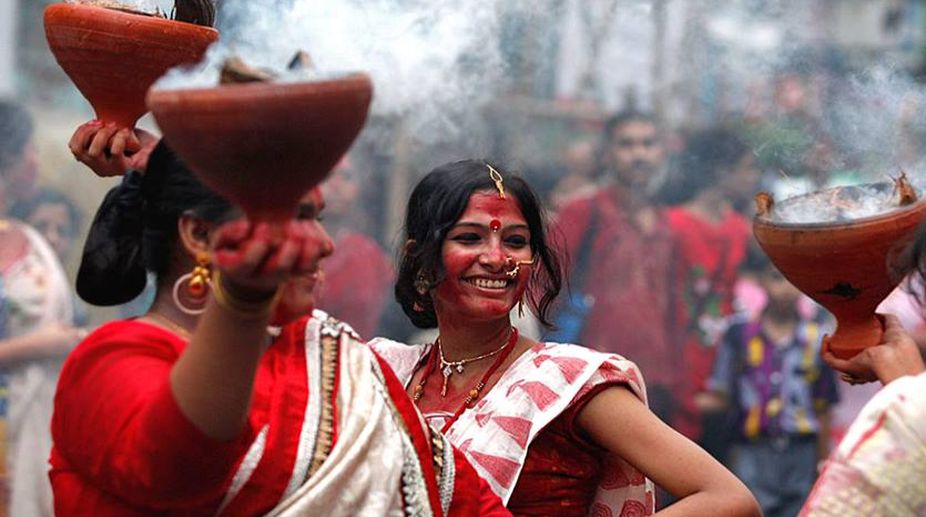Kangana sweeps Ayodhya temple before ‘Pran Pratishtha’
In response to Prime Minister Narendra Modi’s call to clean temples across the country ahead of the ‘Pran Pratishtha’ ceremony…

Representational Image (Photo: Facebook)
The Durga Puja spirit picked up on Wednesday which marked Maha Saptami — day two of the Puja — as attired in their best people visited puja marquees to pray to the Goddess and participate in the festivities across West Bengal.
The day started off with morning prayers, as the rituals commenced with “Pran Pratistha” where the deity was symbolically endowed with life and invoked in a group of nine plants bunched together — the Navapatrika.
The “Kola Bou”, a tender banana plant symbolising a bride, was given a river bath amidst drum beats, wrapped in a sari and placed next to the idol of Ganesha.
Advertisement
Through “Pran Pratistha”, the spirit of Durga as a warrior goddess is awakened, and she starts her battle against the manifestation of all evil in the form of Mahishasura — the demon king in the form of a buffalo.
In accordance with custom, fasting devotees offered flowers to the Goddess in obeisance and later feasted on an array of delicacies.
Bells chimed, cymbals clanged and the invigorating beats of “dhaak” (drums) set the day for celebrations. This is also the time when people meet friends and family, relish the array of street food being sold since morning in makeshift stalls. Even a rain forecast failed to dampen spirits.
More than 3,500 community pujas have been organised in Kolkata and suburbs, with diverse themes, lighting and decorations wooing the revellers.
The five-day carnival is the biggest annual event in this part of the world as roads are choked with human traffic throughout the day and night.
The pujas held at the houses of erstwhile zamindar (landowner) families of Hatkhola’s Duttas, the Devs of Shovabazar in North Kolkata and Mullicks of South Kolkata’s Bhowanipore also drew a steady stream of onlookers.
Traditional pujas usually have medium-sized idols within one frame (“ek chala”) and are decorated beautifully with “daker saaj” made from the pith of a plant, also called shoal.
According to Hindu mythology, the festivities and prayers begin with the symbolic arrival of the Goddess on earth on the sixth day of the first quarter of the moon, and ends on Dashami or the 10th day, which is celebrated across the country as Dussehra.
Traditionally, every pandal has an idol of Goddess Durga depicting her as slaying the demon Mahishasura. She is shown astride a lion and wielding an array of weapons in her arms.
Advertisement